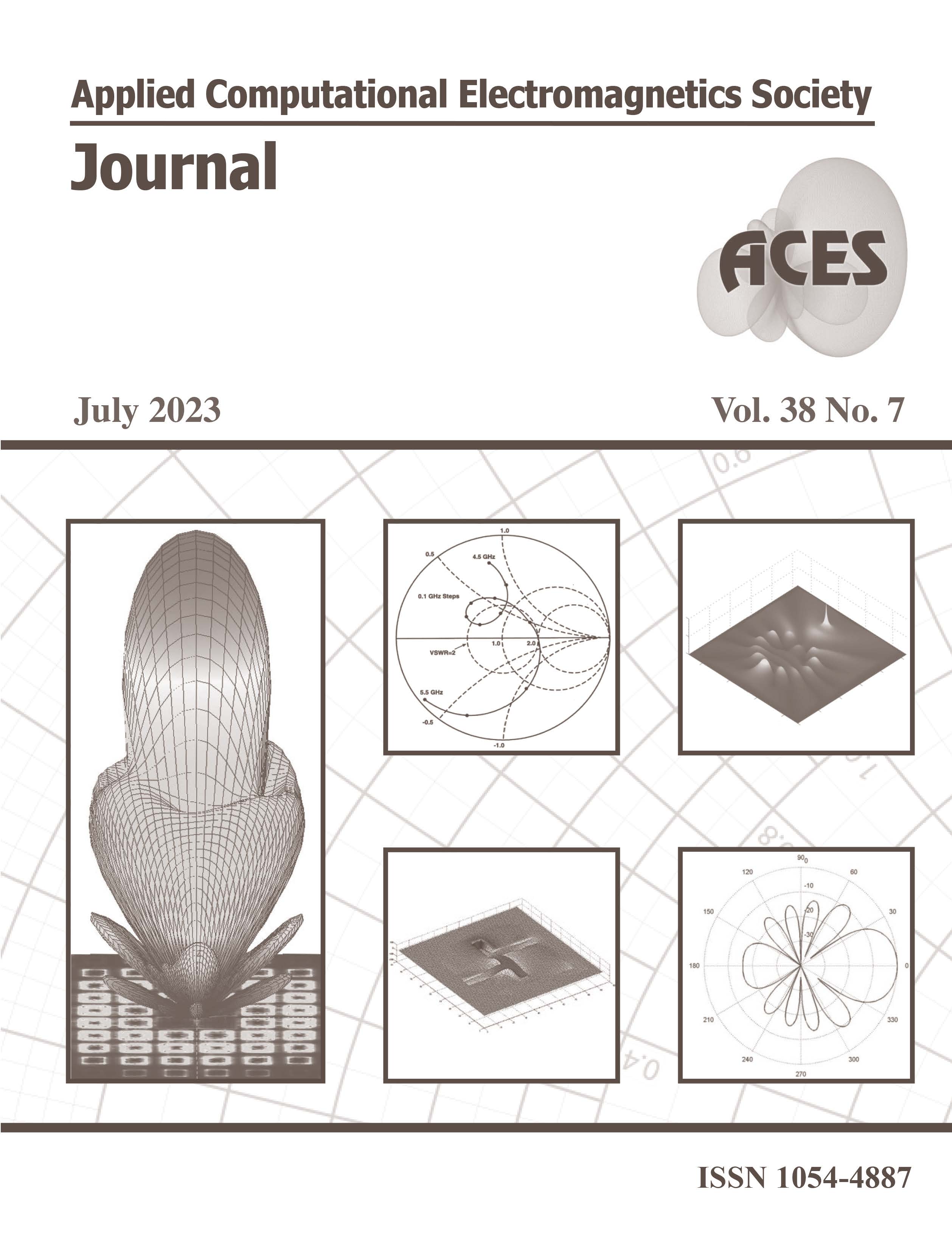Residual Flux Measurement of Single-phase Transformers based on Equivalent Resistance
DOI:
https://doi.org/10.13052/2023.ACES.J.380710Keywords:
Equivalent resistance, field-coupled equivalent circuit, residual flux measurement, transformerAbstract
Due to the presence of transformer residual flux, the magnetic flux of the core rapidly reaches saturation, thus causing an inrush current when the no-load transformer is directly connected to the grid, which affects the safe operation of the grid. Therefore, it is necessary to study the residual flux in the core to reduce the inrush current. However, the residual flux estimation has a large error. In this paper, a method is proposed to measure the residual flux of the transformer core by solving equivalent resistance and determining the direction of residual flux by the difference between the forward and reverse transient currents. In addition, the relationship between residual flux and equivalent resistance is established, and the empirical formula is obtained for calculating the residual flux. To evaluate the effectiveness of the proposed method, the residual flux of the square core is measured on the constructed experimental platform. Compared with the experimental results, the relative error of the residual flux of the core calculated by the proposed method is within 6%, which has higher accuracy and provides a reference for residual flux estimation.
Downloads
References
C. Chuanjiang, F. Chun-en, X. Yang, L. Wei, Z. Bi-de, and R. Xiao, “Experimental study on controlled unloaded transformer switching considering residual flux”’ 2017 4th International Conference on Electric Power Equipment - Switching Technology (ICEPE-ST), Xi’an, China, 2017.
W. S. Fonseca, D. S. Lima, A. K. F. Lima, M. V. A. Nunes, U. H. Bezerra, and N. S. Soeiro, “Analysis of Structural Behavior of Transformer’s Winding Under Inrush Current Conditions,” IEEE Transactions on Industry Applications, vol. 54, no. 3, pp. 2285-2294, May-June 2018.
E. Cardelli, A. Faba, and F. Tissi, “Prediction and Control of Transformer Inrush Currents,” IEEE Transactions on Magnetics, vol. 51, no. 3, pp. 1-4, March 2015.
W. Yuan, H. Zhang, Y. Shangguan, J. Zou, and J. Yuan, “Analysis on method of calculating transformer residual flux by using the integration of port-voltage waveform and its implementation,” 2017 20th International Conference on Electrical Machines and Systems (ICEMS), Sydney, NSW, Australia, 2017.
K. Wang, G. Li, and S. Zhang, “Research on residual flux characteristics of transformer with single-phase four-limb core under different dc excitation current,” 2020 IEEE International Conference on High Voltage Engineering and Application (ICHVE), Beijing, China, 2020.
D. Cavallera, V. Oiring, J.-L. Coulomb, O. Chadebec, B. Caillault, and F. Zgainski, “A new method to evaluate residual flux thanks to leakage flux, application to a transformer,” IEEE Transactions on Magnetics, vol. 50, no. 2, pp. 1005-1008, Feb. 2014.
T. Peng, D. Wan, M. Zhao, H. Zhou, L. Mao, and X. Duan, “An indirect method for measuring transformer residual magnetism,” 2019 IEEE 3rd Conference on Energy Internet and Energy System Integration (EI2), Changsha, China, pp. 1084-1087, 2019.
D. Vulin, K. Milicevic, I. Biondic, and G. Petrovic, “Determining the residual magnetic flux value of a single-phase transformer using a minor hysteresis loop,” IEEE Transactions on Power Delivery, vol. 36, no. 4, pp. 2066-2074, Aug. 2021.
C. Huo, Y. Wang, S. Wu, and C. Liu, “Research on residual flux density measurement for single-phase transformer core based on energy changes,” IEEE Transactions on Instrumentation and Measurement, vol. 70, pp. 1-9, 2021.
W. Ge, Y. Wang, Z. Zhao, X. Yang, and Y. Li, “Residual flux in the closed magnetic core of a power transformer,” IEEE Transactions on Applied Superconductivity, vol. 24, no. 3, pp. 1-4, June 2014.
S. Wu, Y. Ren, Y. Wang, C. Huo, and C. Liu, “Residual flux measurement of power transformer based on transient current difference,” IEEE Transactions on Magnetics, vol. 58, no. 2, pp. 1-5, Feb. 2022.
Y. Wang, Z. Liu, and H. Chen, “Research on residual flux prediction of the transformer,” IEEE Transactions on Magnetics, vol. 53, no. 6, pp. 1-4, June 2017.
C. Huo, Y. Wang, C. Liu, and G. Lei, “Study on the residual flux density measurement method for power transformer cores based on magnetising inductance,” IET Electric Power Applications, vol. 16, no. 2, pp. 224-235, 2022.
M. Ouili, R. Mehasni, M. Feliachi, H. Allag, H. Bouchekara, G. Berthiau, and M. Latreche, “Coupling of 3D analytical calculation and PSO for the identification of magnet parameters used in magnetic separation,” Applied Computational Electromagnetics Society (ACES) Journal, pp. 1607-1615, 2019.
E. Gomez, A. Gabaldón, A. Molina, and J. Roger-Folch, “Coupling 2D finite element models and circuit equations using a bottom-up methodology,” The Applied Computational Electromagnetics Society (ACES) Journal, pp. 225-231, 2002.
M. Jafarifar, B. Rezaeealam, and A. Mir, “A new approach for improving the load current characteristic of cascaded magnetic flux compression generator,” Applied Computational Electromagnetics Society (ACES) Journal, vol. 34, no. 8, pp. 1134-1142, 2019.
F. G. Montoya, F. D. León, F. Arrabal-Campos, and A. Alcayde, “determination of instantaneous powers from a novel time-domain parameter identification method of non-linear single-phase circuits,” IEEE Transactions on Power Delivery, vol. 37, no. 5, pp. 3608-3619, Oct. 2022.
J. Ge, H. H. Eldeeb, K. Liu, J. Kang, H. Zhao, and O. Mohammed,, “Optimal range of coupling coefficient of loosely coupled transformer considering system resistance,” Applied Computational Electromagnetics Society (ACES) Journal, vol. 35, no. 11, pp. 1368-1369, Nov. 2020.




